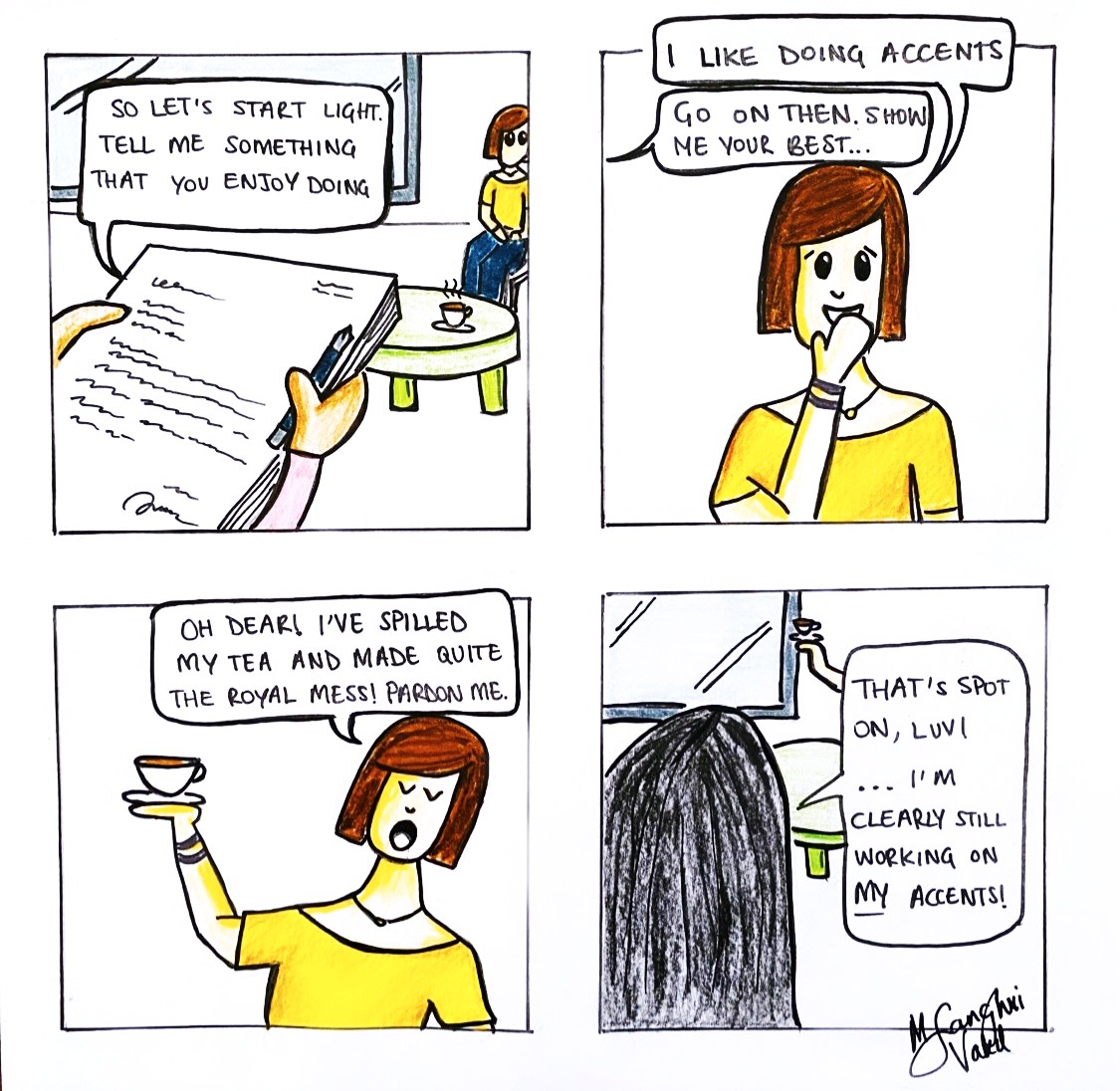
My Two Cents of Humour

A Thursday, 4pm: My client joins the Zoom link and is currently in the waiting room. I quickly run my fingers through my hair one final time and smile wide at my laptop screen, at this point acting like a mirror. I click ‘Admit’. My client now appears with a slight change from the usual– their background looks eerily familiar. I take a second and think out loud, “Oh that’s the Oval Office! Oh hello, President!” My client and I share a joint chuckle.
Working virtually has incited innovative and clever use of digital platforms– and in a humorous way. Humour, in fact, has been a powerful tool in my therapeutic toolkit working both virtually and face-to-face. Humour and therapy, you may ask? Therapy is all about discussing the hard stuff, right? Let’s think again.
The following comics I’ve drawn up (I tried!) begin to depict how using humour and light-heartedness in therapy can be beneficial:
Building Rapport
Often, clients come to therapy nervous, not knowing what to expect or feeling like they may be exposed. Establishing rapport with clients is a skillful endeavour, and humour serves as a powerful lubricant to rapport-building. Drawing on the client’s strengths or interests, and packaging them in a light-hearted manner, enables the client to build a comfort in the space, enhance their trust, and allow them to own the space.

Also read: Is Digital Recluse the Best Practice for Mindfulness?
Connecting
Whilst therapy focuses on the client’s subjective reality, i.e. their perception of the emotional distress they are experiencing, humour enables individuals to connect through sharing a lived experience. In discussing a shared experience, the client and therapist can feel socially connected by sharing an aspect of their identity. In this instance, a little self-disclosure (therapists are still split on this topic) can go a long way to build this sense of togetherness. For one, meaningful self-disclosure enables the client to feel understood and the therapist to empathise.

Research by Professor Robert Provine, a neuroscientist and psychologist at the University of Maryland, suggested that less than 20% of the real-world laughter is a response to stimuli resembling something funny. Through recording more than a thousand “laugh episodes” in bars, shopping malls, cocktail parties etc., his research proposed that the majority of our laughter isn’t in response to jokes; rather, laughter is predominantly a form of communication that plays a crucial role in building and maintaining social connection– and humour is a tool that facilitates this.
Providing Comic Relief
Yes, therapy can get heavy. That’s why mental health professionals are trained intensely to be able to hold their clients, ensuring that they are not leaving their clients in a vulnerable space after a difficult session. Often, this is where comic relief plays a role. The therapist and client can use humour as a way to ground themselves in the present moment, pulling the client out of a state of absolute doom, terror or overwhelm. Additionally, such an episode of comic relief may provide a cathartic release for clients. This, in turn, allows the client to perceive therapy as a space where we can hold both negative and positive emotions together.

Conveying a message
Humour, through the use of metaphors, allusions and comparisons can become a conduit for the client to convey a message (that may otherwise be challenging for them). Often, a client may not have the vocabulary to express what they are feeling. Or simply, they may not be able to identify the way they are feeling. Hence, they employ a representation of their emotive experience, such as a meme, a video or a character that they resonate with.

Further understanding this with an analytic lens, we may see that a client is pointing to their pain through humour (often sarcastic or dark humour), on a conscious or subconscious level. This sits in line with Sigmund Freud’s view in Jokes and Their Relations to the Unconscious, that laughter allows one to release their repressed feelings. The therapeutic process requires the therapist to engage in a tenacious reading between the lines, and the use of humour may be a sign to attend to.
A skillful practice
We must tread carefully, as using humour in therapy requires skillfulness on the therapist’s part, ensuring that the humour is sensitive and appropriate towards the client and, most importantly, purposeful. Moreso, being witty on the spot is a talent as it indubitably requisites a high degree of perceptiveness and insight, which comes with years of practice and a certain élan.
Let’s remember that therapy explores the full spectrum of the human emotional experience where all emotions are welcome. So, next time you’re sitting in front of your therapist, don’t be afraid to pull out your sense of humour!

How Social Isolation Impacts Geriatric Mental Health? How to Reverse It?
Depression vs Dementia: How to Tell the Difference in Older Adults

